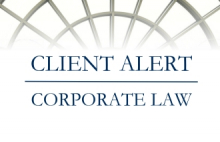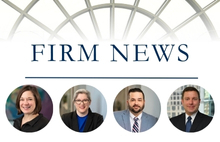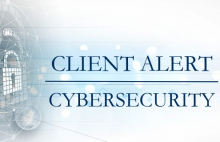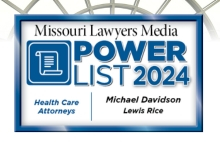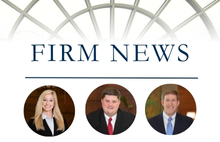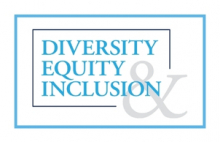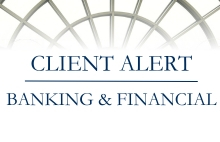Final Qualified Opportunity Zone Regulations in Detail
February 2020On December 19, 2019, the Internal Revenue Service (IRS) issued final regulations (TD 9889) that govern tax-favored investments in low-income areas that have been designated as qualified opportunity zones (QO Zones). The final regulations largely adopt the rules in the proposed regulations, with several taxpayer-favorable modifications that should facilitate investment in QO Zones. This alert discusses the key aspects of the final regulations and highlights notable changes made from the proposed regulations.
For background on the QO Zone program and the first set of proposed regulations, please see our prior alert. A summary of the key provisions of the second set of proposed regulations can be found here. A brief summary of most of the provisions in the final regulations, many of which are discussed in more detail below, can be found here.
Provisions Relating to an Initial Investment in a Qualified Opportunity Fund
Taxpayers can elect to defer recognition of capital gains until December 31, 2026 (a “Deferral Election”), by making a qualified investment in a qualified opportunity fund (QOF). In general, to defer capital gains, the amount that the taxpayer invests in a QOF would need to equal the realized gain, and this investment would need to be made within 180 days after the date of the sale or exchange that gave rise to the gain. The final regulations made revisions affecting which gains can be deferred.
Gross Section 1231 Gains Are Now Eligible for Deferral
The final regulations expand the circumstances in which Section 1231 gains can be invested in QOFs.
When a taxpayer sells property that has been used in a trade or business for more than one year, the sale generates Section 1231 gain or loss. Under general tax rules, a taxpayer nets all Section 1231 gains and Section 1231 losses at the end of each tax year. If there is a net gain, all gains are taxed at capital gains rates. If there is a net Section 1231 loss, all losses are treated as ordinary losses.
Under the proposed regulations, taxpayers could defer Section 1231 gain through a QOF only if the taxpayer had net Section 1231 gain for the year. This rule forced taxpayers to wait until the end of the year to determine if sales of Section 1231 assets generated a net Section 1231 gain that could then be invested in a QOF.
The final regulations change these rules in an extremely favorable manner by permitting the entire amount of each Section 1231 gain to be invested when it is realized. This means that each Section 1231 gain now stands on its own and may be immediately invested in a QOF without regard to other Section 1231 gains or losses for the year. For example, if a taxpayer incurs a $50,000 Section 1231 loss on February 1, 2020, and recognizes $100,000 of Section 1231 gain on March 1, 2020, the taxpayer has $100,000 of eligible gain that can be invested in a QOF.
This change provides taxpayers with several benefits. First, it allows taxpayers to invest more money in QO Zones and to invest immediately after recognizing a Section 1231 gain, as opposed to waiting until the end of the tax year to determine whether there is a net Section 1231 gain. Second, because Section 1231 gain may be immediately invested in a QOF and deferred, any Section 1231 loss for the year, which would otherwise have reduced Section 1231 gain, may now become a net Section 1231 loss, giving rise to an ordinary deduction.
Further, this change potentially allows investors to circumvent the recapture rule of Section 1231. Before treating net Section 1231 gain as capital gain, a taxpayer must recapture any net Section 1231 losses from the previous five years as ordinary income. For example, if a taxpayer has net Section 1231 gain of $200,000 in 2020, but has a net Section 1231 loss of $50,000 in 2018, $50,000 of the 2020 gain is recharacterized as ordinary income. If a taxpayer invests gross Section 1231 gain in a QOF in 2019 or 2020, and the deferred Section 1231 gain is recognized on December 31, 2026, any Section 1231 loss that received ordinary treatment in the year of investment due to the deferral of Section 1231 gain will be outside the five-year recapture window. Of course, when the deferred Section 1231 gain is recognized, it may still be recharacterized as ordinary income to the extent that the taxpayer had net Section 1231 losses during the five-year period preceding December 31, 2026.
More Flexibility for Investing Gain from Installment Sales
In an installment sale, a taxpayer recognizes gain in each year as payments are received. The final regulations permit taxpayers to make a separate Deferral Election for the capital gain from an installment sale recognized in each year. Taxpayers may defer capital gain recognized on an installment sale even if the initial sale occurred prior to the enactment of the Tax Cuts and Jobs Act (TCJA).
In addition, if a taxpayer receives more than one installment payment during the year, the taxpayer can elect to either (1) have a separate 180-day period for each payment received during the year, or (2) start the 180-day period for all installment amounts received during the year on the last day of the tax year.
Additional Flexibility for Investments in a QOF by Partners and S Corporation Shareholders
Under the proposed regulations, a partnership or S corporation that wished to defer realized capital gain had 180 days to reinvest that gain in a QOF. If the partnership or S corporation elected not to defer at least some of its capital gain and therefore allocated that capital gain to its owners, the 180-day period for the partners or S corporation shareholders to make a Deferral Election generally started on the last day of the partnership or S corporation’s tax year. The partner or S corporation shareholder also had the option of electing to start the 180-day period on the date that the partnership or S corporation recognized the capital gain.
The final regulations provide additional flexibility for partners and S corporation shareholders. Each partner or S corporation shareholder may elect to start the 180-day period on the due date of the partnership or S corporation’s tax return, not including any extensions. Thus, for gain recognized in 2019, a partner or S corporation shareholder may choose to start its 180-day period on March 15, 2020. This additional flexibility assists partners and S corporation shareholders who might not receive a Schedule K-1 showing their allocable share of gain until late in the filing season.
Eligible Interests in a QOF May be Acquired from a Third Party
The proposed regulations provided that a taxpayer could make a qualifying investment in a QOF by purchasing an “eligible interest” (that is, an interest in a QOF that will qualify for the Deferral Election) from a person other than a QOF. The final regulations clarify that the purchase of a QOF can be treated as an eligible interest even if the transferor did not make a Deferral Election, that is, the transferor's interest in the QOF was originally purchased with after-tax dollars. Further, this treatment extends to purchases of interests in entities in existence prior to enactment of the TCJA if such entities later become QOFs.
Provisions Relating to Inclusion Events
Capital gain deferred through investment in a QOF must be recognized on the earlier of (i) the date an “inclusion event” occurs, or (ii) December 31, 2026. The final regulations clarify the rules relating to “inclusion events” and specify when an investor can defer gain recognized upon the occurrence of an inclusion event.
Changes to Events Causing Inclusion of Deferred Gain
An inclusion event results from a transfer of a qualifying investment in a QOF, to the extent that the transfer reduces or terminates the taxpayer’s equity interest in the QOF. Common examples of inclusion events include a gift or a sale or distribution by a QOF partnership or S corporation in excess of the investor’s basis.
The final regulations extended the list of inclusion events that were provided in the proposed regulations. New inclusion events include (1) the loss of QOF status (through either voluntary self-decertification or involuntary decertification), (2) a change in entity classification under the check-the-box rules (i.e., conversion from a partnership to a corporation or vice versa), and (3) a transfer to a spouse incident to divorce.
The final regulations also eliminate one problematic inclusion event. The proposed regulations provided that a greater than 25% aggregate change in ownership of an S corporation that owns a qualifying investment in a QOF constituted an inclusion event. Under the final regulations, this is no longer an inclusion event. This avoids the unpredictability of an S corporation shareholder having to bear tax consequences due to another shareholder selling its interest.
Additional Deferral of Previously Invested Gains
No Deferral Election can be made with respect to a sale or exchange if a previous Deferral Election remains in effect. This provision raised the question of whether a taxpayer could sell an interest in a QOF, but obtain additional deferral by reinvesting in a different QOF.
Gain arising from an inclusion event is eligible for deferral, even if the taxpayer retains a portion of its qualifying investment after the inclusion event. If a taxpayer disposes of its entire interest in a QOF, the gain recognized from the inclusion event can be invested in either the original QOF or a different QOF if a timely Deferral Election is made. If the taxpayer disposes of only a portion of its interest in a QOF, the gain recognized can be deferred only by investment in a different QOF.
Basis Rules for Inherited Interests in a QOF
An investor’s initial basis in its interest in a QOF is $0. The proposed regulations provided that the death of the holder of a QOF interest was not an inclusion event. Because Section 1014 generally provides beneficiaries a stepped-up basis equal to the property’s fair market value on the death of the owner, many tax professionals were hopeful that the basis in a QOF would be stepped up to fair market value upon the holder’s death. Unfortunately, the final regulations provide there is no basis step-up at death. Thus, a basis step-up upon death is available only for a non-qualifying investment in a QOF (i.e., one that does not qualify for deferral).
Deferred Gain Is Taxed at Rates in Effect When the Deferred Gain Is Recognized
Any deferred gain that is invested in a QOF will be included in income upon the earlier of an inclusion event or December 31, 2026. The proposed regulations provided that when the deferred gain is included in income, the gain will have the same attributes in the year of inclusion as if the tax had not been deferred. There was confusion as to whether the federal income tax rate would be considered a tax attribute such that the tax rate in effect at the time of deferral, rather than for the year in which the deferred gain was recognized, would apply in the year of inclusion. The final regulations clarify that deferred gain is subject to tax at the applicable federal income tax rates in effect for the year of inclusion. As a result, investors seeking to defer gain through an investment in a QOF should weigh the risk that the tax rates on capital gains in 2026 could be higher than current rates.
Rules Relating to the Operation of a QOF and QOZB
To qualify as a QOF, 90% of the entity’s assets must be QO Zone Property (the “90% Test”). QO Zone Property includes QOZ Stock, QOZ Partnership Interests, and QOZ Business Property. QOZ Stock and QOZ Partnership Interests must be equity interests in an entity that is a qualified opportunity zone business (QOZB).
Expansion of the Working Capital Safe Harbor and Creation of a New Working Capital Safe Harbor for Startup Businesses
A QOZB may not hold more than 5% of its assets in “nonqualified financial property,” which is essentially cash and cash equivalents. This limitation does not apply to reasonable working capital of the QOZB that is held in cash, cash equivalents or debt instruments with a term of 18 months or less.
The proposed regulations created a safe harbor that allows QOZBs to hold cash for up to 31 months if (1) there is a written plan for the use of the cash for the development of a trade or business or for the acquisition, construction, or substantial improvement of tangible property in a QO Zone; (2) there is a schedule consistent with ordinary business operations of the business, providing that the working capital will be used within 31 months; and (3) the QOZB substantially complies with the plan.
The final regulations add a 62-month safe harbor for startup businesses. This safe harbor, which should facilitate investment in QO Zones, provides that maintaining cash in excess of the 5% limitation will not cause a trade or business to fail to qualify as a QOZB. It also facilitates meeting other operational requirements of a QOZB. For example, during the 62-month period, gross income from the business will be counted toward satisfying the requirement that 50% of the business’s gross income must be derived from an active trade or business in a QO Zone. Additionally, if the working capital is used to acquire or improve tangible property or acquire intangible property, the property will count toward satisfaction of the requirements that a QOZB use 70% of its tangible property and 40% of its intangible property in the active conduct of a trade or business in a QO Zone.
To qualify for the 62-month safe harbor, a startup business must receive multiple rounds of financing during the startup phase. A startup business can qualify for a 31-month safe harbor with respect to the first round of financing. Upon receipt of a second round of financing, the business can both extend the original 31-month safe harbor covering the first round of financing and receive safe harbor coverage for up to 31 months for the subsequent round of financing, as long as the subsequent round of financing independently meets the safe harbor requirements. An additional requirement is that the plan for the subsequent cash infusion must form an integral part of the plan covering the initial financing.
The final regulations also implement operating rules for the 62-month safe harbor. The working capital safe harbor cannot be extended beyond 62 months from the date of the first cash infusion, regardless of how many rounds of financing the business receives. For example, if a subsequent round of financing is received 45 months after the date of the first cash infusion, any additional cash infusion will be covered by the 62-month working capital safe harbor for only 17 months. In addition, each overlapping or sequential application of the working capital safe harbor must include a substantial amount of working capital assets to ensure that a de minimis subsequent infusion does not create a subsequent 31-month period. The final regulations also clarify that if tangible property is expected to constitute qualifying property as a result of the planned expenditure of working capital (e.g., the tangible property is expected to be used in the QOZB’s trade or business and to satisfy the original use test or be substantially improved), then the tangible property purchased, leased, or improved by the QOZB pursuant to its working capital plan is treated as qualifying property during the 62-month safe harbor.
The final regulations do not define "startup business." This suggests that any business that receives multiple rounds of financing would qualify.
The final regulations also clarify that when a project is delayed due to a disaster and the QO Zone is located in a federally declared disaster area, the timeframe for the 31-month working capital safe harbor would be extended by 24 months, for a total of 55 months.
Certification and Decertification of a QOF
To qualify as a QOF, a fund must satisfy the 90% Test every six months. A QOF must pay a penalty for each month that it fails to meet the 90% Test. A QOF self-certifies that it satisfies the 90% Test by filing a Form 8996 with its tax return. During the first taxable year that an entity selects to operate as a QOF, it has the option of designating the first month that it would be considered a QOF. If no month is specified, then the first month of the entity’s first taxable year is considered the first month that the entity is a QOF. Any gain invested by the taxpayer prior to the QOF certification is not eligible for deferral.
The final regulations provide a voluntary self-decertification process. In addition, the preamble notes that the IRS is continuing to study the conditions under which an involuntary decertification should occur. The final regulations provide an example under an anti-abuse rule, where an entity is characterized as a non-QOF after failing to meet the 90% Test for the entire 10-year holding period, even though the entity paid the applicable penalty each year. The final regulations, however, still do not address at what point frequent and repeated failure to satisfy the 90% Test would retroactively disqualify an entity from being a QOF, resulting in a loss of potential tax benefits for investors.
QOZBs May Lease 5% of Their Property to a Sin Business
A QOZB may not operate a “sin business,” which encompasses golf courses, country clubs, massage parlors, hot tub facilities, tanning salons, racetracks, gambling facilities, and liquor stores. However, the statute does not expressly prohibit a QOZB from leasing its property to a sin business. Nonetheless, the final regulations prohibit a QOZB from leasing more than 5% of its property to a sin business. This could be beneficial to hotels or apartment complexes that may lease space to a spa providing tanning services or a store that sells alcohol.
QO Zone Business Property
A Period of Vacancy Will Satisfy the Original Use Test
Qualifying property of a QOF or QOZB must generally either have its original use commence in the QO Zone or be substantially improved. A newly constructed building meets the original use test if the QOF or the QOZB is the original user of the building.
Under the proposed regulations, a building or other structure that had been vacant for at least five years prior to being purchased by a QOF or QOZB, satisfied the original use test. The final regulations make several taxpayer-favorable changes to this rule. First, a one-year vacancy requirement applies to property that was vacant prior to and on the date that the QO Zone was designated and through the date on which the QOF or QOZB purchased the property. Second, for property that was not vacant at the time of the QO Zone designation, the five-year vacancy requirement has been shortened to three years. Third, the final regulations provide that a building or land is considered to be vacant if it is “significantly unused,” which means that more than 80% of the square footage of usable space is not being used; as a result, continued use of a small portion of a building will not prevent the building from being considered vacant. Fourth, a QOF or QOZB that purchases real property that a local government holds as a result of an involuntary transfer (i.e., through abandonment, bankruptcy, foreclosure, or receivership) may treat the entire property (including the land and structures) as satisfying the original use requirement.
Additional Flexibility for Meeting the Substantial Improvement Test
A QOF or QOZB may acquire existing real property that will qualify as qualified opportunity zone business property (QOZBP) if the QOF or QOZB more than doubles the adjusted tax basis of the building (but not the land) within a 30-month period following acquisition. The final regulations provide for optional aggregation rules that permit, at the election of the QOF or QOZB, the substantial improvement determination to be made for multiple real properties if they are described in a single deed or otherwise closely related. The final regulations also clarify that the substantial improvement test for a building applies even if the value of the building is low compared to the value of the land, subject to anti-abuse rules and to a requirement that land be more than insubstantially improved. Additionally, the cost of purchased property that qualifies as QOZBP may be counted for purposes of meeting the substantial improvement test if the new property is used in the same business and improves the function of the property that is being improved. For example, in renovating a hotel or apartment complex, the cost of purchasing new furniture and fixtures could be counted toward the substantial improvement test.
These changes should facilitate use of QOF funds to redevelop run down areas with vacant or run down properties.
Brownfield Sites May Qualify as Original Use Property
Buildings that are located on brownfield sites (property where the expansion, redevelopment, or reuse may be complicated by the presence or potential presence of a hazardous substance, pollutant, or contaminant) may qualify as original use property that does not have to be substantially improved if the QOF or QOZB ensures that the site meets basic safety standards for human health and the environment. The final regulations also clarify that remediation of contaminated land is taken into account for determining if the land has been more than minimally improved.
Provisions Relating to an Exit from a QOF Investment
Additional Flexibility for the 10-year Permanent Exclusion on Asset Sales
Taxpayers who hold an equity interest in a QOF for at least 10 years can elect to exclude all of the gain from the sale of their interest in the QOF (the “Permanent Exclusion”).
Prior to the issuance of the 2019 proposed regulations, it was unclear whether the Permanent Exclusion applied to sales of assets by the QOF, even though it definitively applied if a taxpayer sold its equity interest in the QOF. This uncertainty made planning for exit from a QOF difficult, particularly, if the QOF intended to make multiple investments. The proposed regulations provided that if a taxpayer held a qualifying investment in a QOF treated as a partnership or an S corporation for at least 10 years and the QOF sold QOZBP after such 10-year period, then the taxpayer could elect to exclude the capital gain arising from the sale of the QOZBP. This exclusion for asset sales applied only to capital gain generated from a QOZBP. As such, sales of inventory, receivables, or other assets subject to ordinary income depreciation recapture would have resulted in ordinary income recognition to the investors. Similarly, if the QOF were to sell assets that were not QOZBP, the investors would be required to recognize the gain from the sale of those assets.
The final regulations significantly broaden the applicability of the exclusion upon an asset sale after a 10-year holding period. In particular, the final regulations permit an investor to exclude all gain from the sale of all assets held by a QOF except for gain arising from the sale of inventory by the QOF in the ordinary course of business. As a result, the exclusion applies to all other types of income, such as depreciation recapture and gain on the sale of other assets that are not QOZBP.
Further, the exclusion is expanded to include asset sales by a QOZB as well as a QOF. Under the proposed regulations, the exclusion for asset sales applied only to a sale of assets by the QOF, and the exclusion did not apply to asset sales by a subsidiary entity. The final regulations provide that capital gains from the sale of property by a subsidiary of the QOF that qualifies as a QOZB also may be excluded from income, provided that the investor has held its qualifying investment in the QOF for at least 10 years.
The final regulations also clarify that a taxpayer may make multiple elections to exclude gain on an asset sale if, for example, a QOF or QOZB sells its assets over a period extending over multiple years. These changes in the final regulations should permit investors to structure exits as asset sales without forfeiting the benefit of the Permanent Exclusion.
Exits after December 31, 2047
The final regulations make no changes to the rule that the Permanent Exclusion applies only if a taxpayer makes the election and sells the investment in the QOF by December 31, 2047. However, the preamble to the final regulations does note that the U. S. Department of the Treasury and the IRS will continue to consider whether an automatic basis step-up is appropriate before the end of 2047 where the QOF interest has not been sold.
If you have any questions regarding Opportunity Zones or the impact of the final regulations, please contact one of our tax or real estate attorneys.


